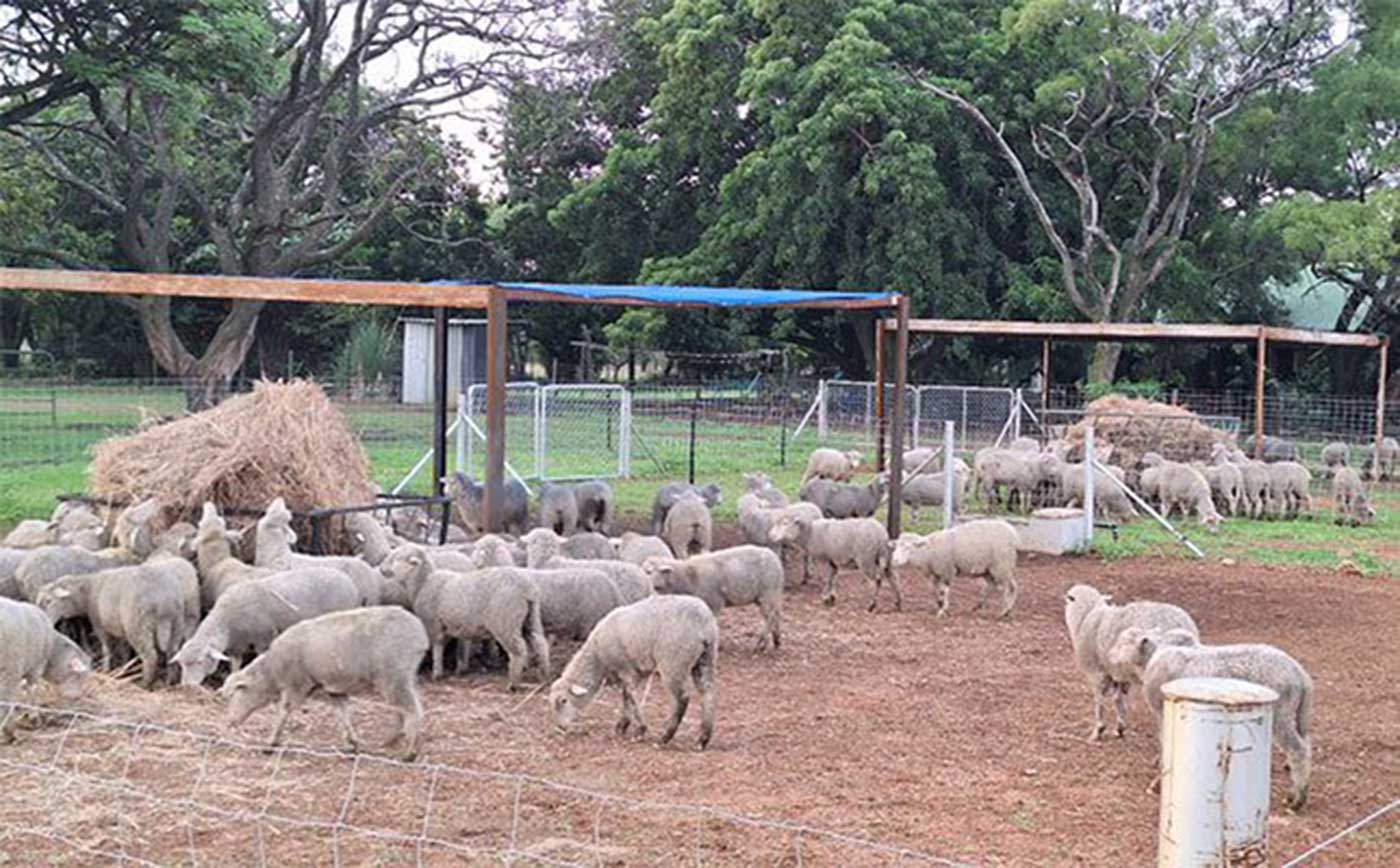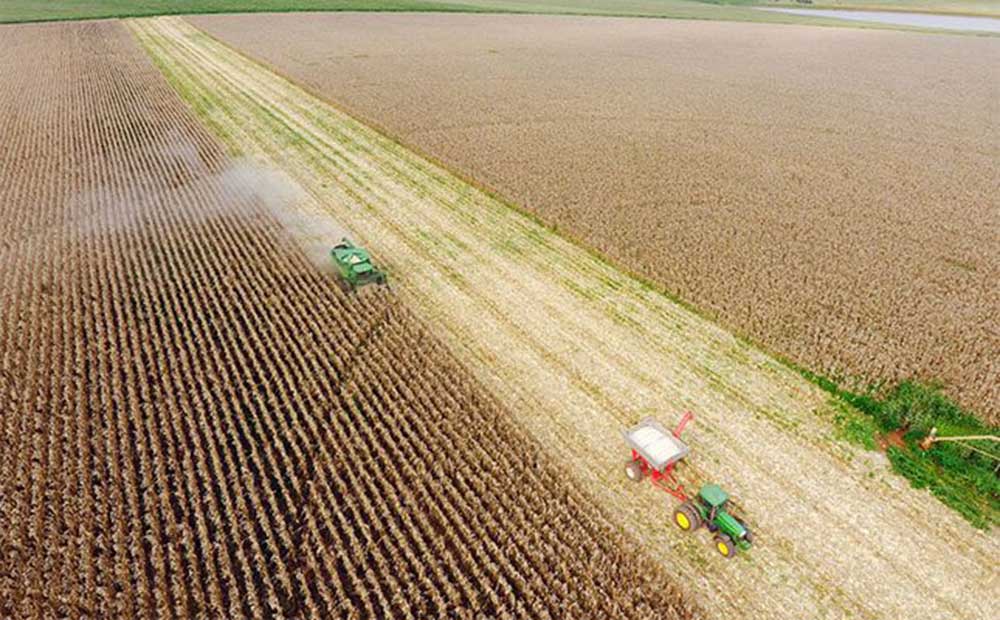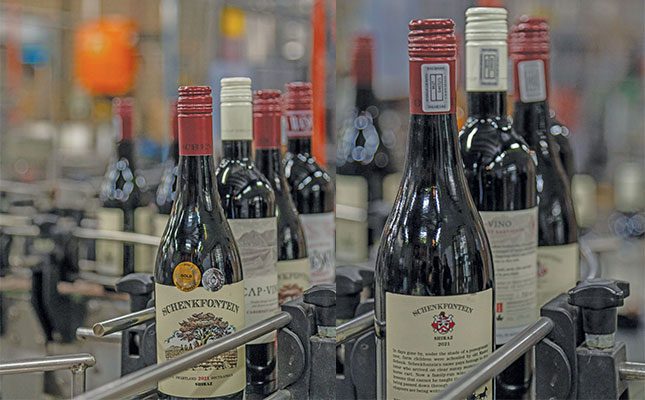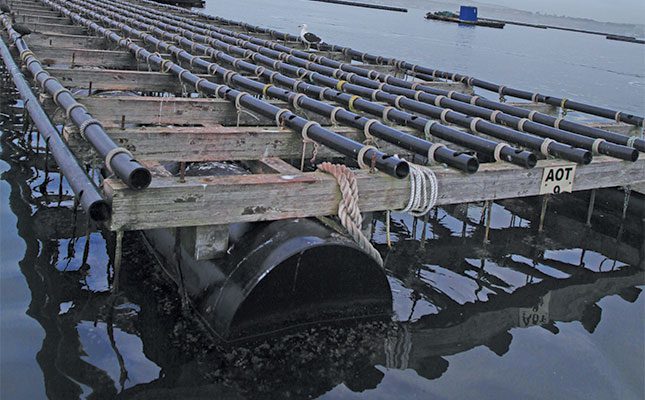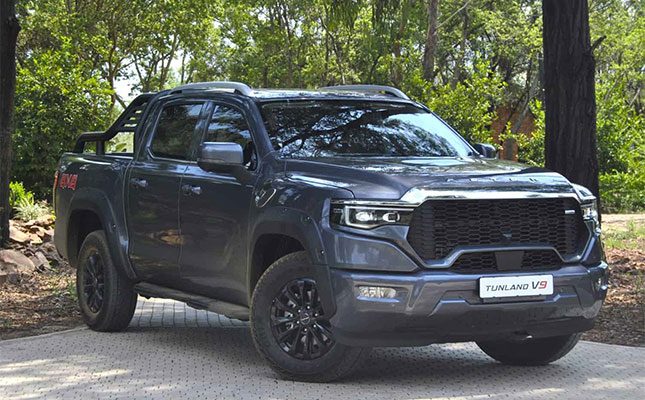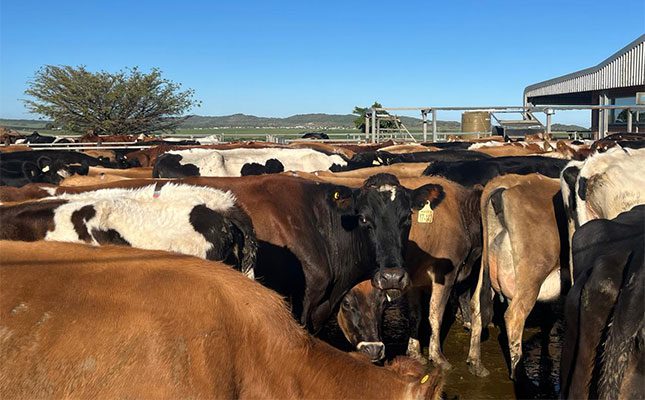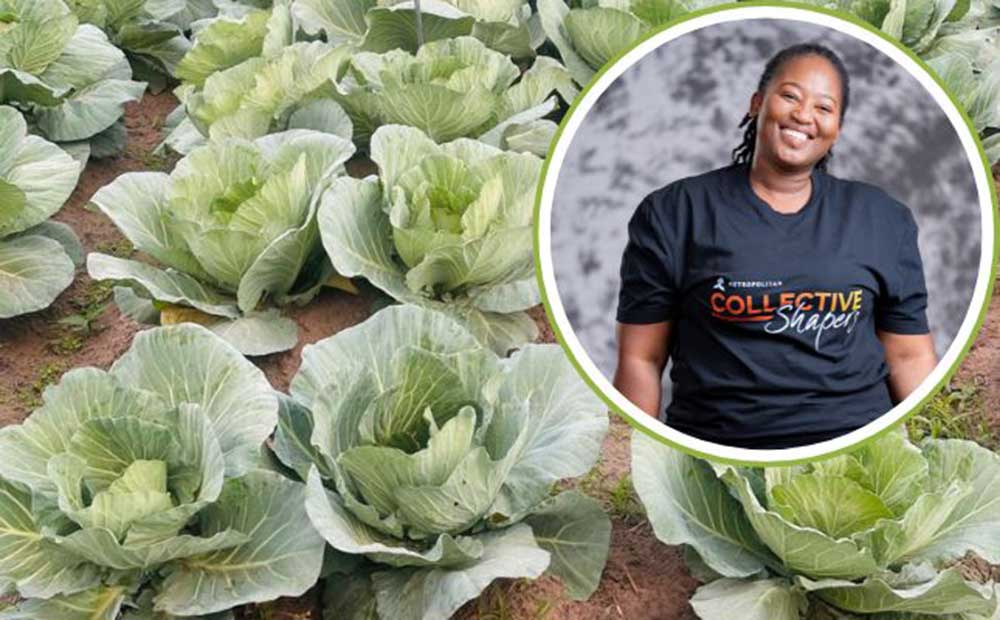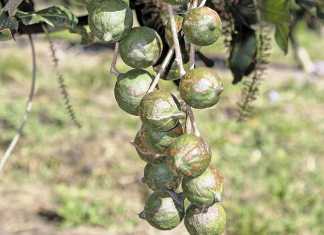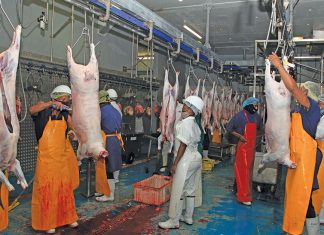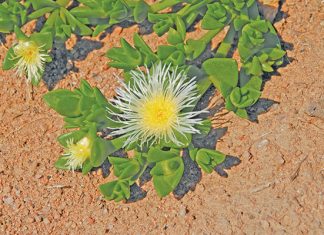
Photo: Glenneis Kriel
Many South African farmers have adopted conservation agriculture practices over the years, such as minimum tillage, crop rotation, and soil coverage through stubble retention or mulches.
These practices have delivered tangible benefits, ranging from improved soil health and structure to better water-holding capacity, reduced erosion, and increased resilience during droughts and floods.
Wilhelm Joubert, viticulturist of Hartenberg Wine Estate in Stellenbosch in the Western Cape, however, believes these practices can only take you so far: “To unlock their full potential, you need to add an animal factor – and manage those animals properly.”
While animal integration is often touted as a regenerative practice, Joubert cautions that it is frequently used rather as a marketing gimmick than being meaningfully implemented.
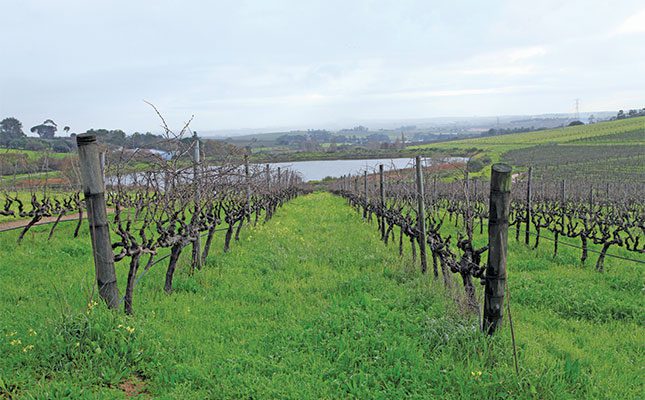
“Many operations nowadays claim to be regenerative, but if you dig deeper, the animals are not playing a functional role in the system,” he says.
At Hartenberg, authenticity drives the approach. Stellenbosch University has been invited to study the impacts of their regenerative transition, with South Africa Wine continuing the research to get longer-term results.
Although the initial study period has been too short for firm conclusions to be drawn, early findings suggest that fertilising cover crops brings minimal benefits in terms of dry matter production or cattle weight gain.
Joubert says that gains are so small that it does not justify the additional input costs.
Since embarking on this journey, the estate has also been comparing wines from regenerative blocks to wines from non-regenerative blocks. However, almost all its vineyards, except for controls, have been switched to regenerative agriculture since 2023.
“Neither of the wines are better than the other,” says Joubert, “but there is a noticeable difference. The regenerative wines tend to have lower alcohol content, and in my view are more elegant and have a style closer to European wines, which is in line with the current market trend.”
Building soil health with cover crops
The use of cover crops had been part of Hartenberg’s production practices, originally to suppress weeds, before Joubert joined the farm in 2006.
At first, they only used single-species grains such as triticale and oats, but over time transitioned to multispecies mixes tailored to the unique needs of each vineyard block.
A typical mix now includes two types of grains – one fast-grower like feeding barley or rye, and one slow-grower like oats – to ensure a sustained biomass through the season.
It also contains two nitrogen-fixing legumes, like medics, clover or grazing vetch, and at least one plant with a deep taproot like chicory or radish to alleviate compaction.
When they started planting cover crops, some soils were so compacted that they required three rounds of discing to plant in it. The entire vineyard floor was also sprayed with herbicides to control weeds and prevent competition with the vines.
“Today, we use no herbicides, and the soil is only disturbed once during the planting of the cover crops,” says Joubert.
A no-till planter is used wherever the row widths permit – on most of the farm – while a light disc action is used in narrower rows to replant seed in the previous year’s plant rests.
One of the key lessons Joubert learned with regenerative farming was to start small.
“Test your ideas on a small area, so you can identify and iron out the problems before you scale up,” he advises.
He speaks from experience: “The first time we tried to go herbicide-free, I tackled too large an area. By November, the weeds had grown up to hip height and we even tried to use pangas to hack them down. I learned quickly that any change needs a proper plan.”
An animal factor
The farm used to buy in Nguni Angus crosses to graze and add value to fallow land. However, the dry summer of 2019 forced Joubert to rethink his approach. Rather than reduce stock or acquire more land, he sought ways to manage the veld more effectively.
This led him to the work of regenerative farming pioneers such as Allan Savory, Joel Salatin, Gabe Brown, and Greg Judy.
Although electric fencing was already used to control the movement of the cattle, his research led him to switch to smaller grazing areas and shorter grazing periods, which significantly boosted regrowth and biodiversity.
To revitalise barren clay patches, he also spread seed in these areas and added straw on top of it to concentrate cattle activity there. “Within a year, the bare spots were gone,” he recalls.
Encouraged by these results, Joubert proposed integrating the cattle into the vineyards to graze the cover crops. With buy-in from the rest of the farm team, they ran initial trials on a few rows, monitoring biological and chemical changes in the soil before and after grazing.
“We saw definite improvements in soil biology diversity after just seven weeks,” says Joubert.
Still, he cautions against becoming overly focused on short-term results.
“It takes time to see changes in soil health and structure. Weather and other external factors can also skew results. What matters is consistent monitoring over time, at the same locations and at the same time of year, using the same tests. That’s how you track long-term trends.”
He also stresses the importance of holistic interpretation: “Do not get tunnel vision about carbon levels or any single indicator. You need to look at the whole picture. Regenerative farming is all about balance.”
Animal movement
Today, Hartenberg has five livestock herds made up of either 25 Ankole cattle or 50 Dexter cattle.
The animals are divided into smaller herds of eight to 12, depending on the breed, purpose, and biosecurity considerations.
These include two Ankole herds, each with a bull from different bloodlines, a herd of Dexter oxen, a herd of Dexter cows with their offspring, and a newly introduced herd of Dexter oxen and heifers.
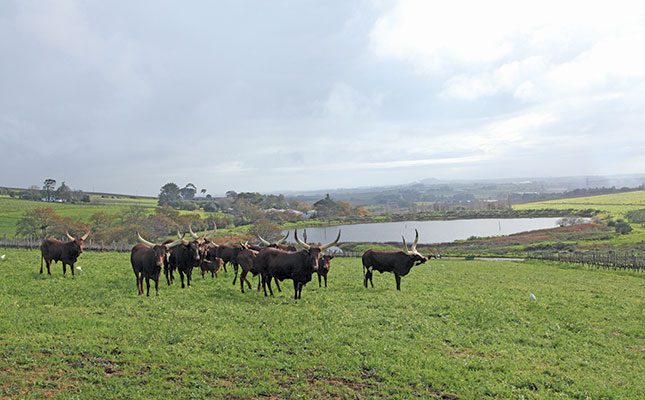
From June to October, when the vineyards are dormant, the cattle graze the cover crops.
The cover crops are replanted annually from 8 to 18 April, using the previous season’s organic matter as a seedbed.
Joubert says he experimented by not replanting cover crops on 18ha of vineyard blocks, of which six had not been replanted with cover crops since 2011.
These blocks have been left to self-seed and were ready to be grazed as early as April. “In the past, we could only graze each section once. Now, these blocks allow for two grazing rotations before the cattle must be removed,” he says.
These vineyards will be monitored and reseeded as needed in future seasons.
Joubert is also exploring the purchase of a baler, which would allow them to harvest excess cover crop biomass that remains ungrazed after October.
From October onward, surplus Dexter oxen are slaughtered and used to produce hamburger patties and steak for the Hartenberg restaurant – products that, according to Joubert, have become so popular that demand constantly outstrips supply.
Managing livestock movement across vineyards requires a mix of strategies. The Dexter cattle, being smaller and more docile, are easily controlled using sheep gates. The Dexters are moved daily and only graze a few rows at a time.
Over weekends the rows to which they have access are doubled to prevent breakouts when they might otherwise run out of fresh grazing.
The larger and more robust Ankole cattle require both wire fencing and electric wires to manage their movement. They are moved less frequently – typically on Mondays and Fridays – with the movement schedules adapted according to the weather.
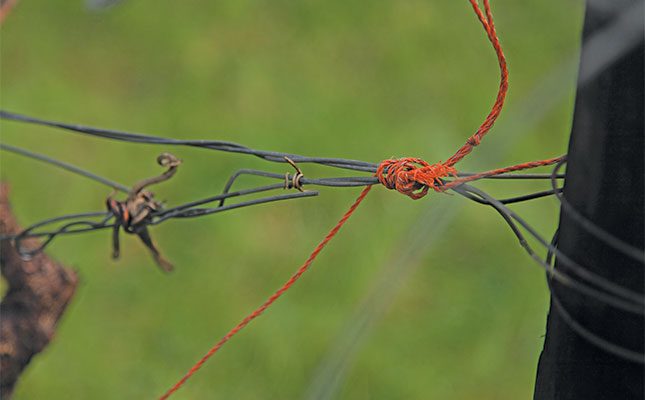
“If it rains, we move them quicker to reduce the risk of soil compaction,” says Joubert.
Dorper sheep are also used to clean up after the cattle in the vineyards, although they are mostly kept out of sight due to the risk of stock theft, while Indian runner ducks have been acquired to help with pest control, and geese to protect the ducks against predators.
A mind shift
When it comes to advice to other farmers, Joubert is clear: regenerative farming is not a recipe that can simply be copied and pasted. It is a systems-based approach that must be tailored to each farm’s specific conditions.
“You need to observe carefully and refine your practices to suit your context. And you must keep reassessing them, because you are working with a living system. What works today might not work tomorrow.”
He also cautions that regenerative farming is not for everyone. “If you do not have a feel for animals, you will need to employ someone who does, because livestock need careful, attentive management.”
Choosing the right type of livestock is just as important. Size, temperament, and ease of handling all play a role in determining whether an animal will fit well into the broader system.
Farmers also need to assess the carrying capacity of their farms. “Instead of maintaining livestock year-round, some might be better off buying in animals for part of the year and finishing them off before selling,” he explains.
At Hartenberg, a few hectares of old vineyards were removed in the past year. Of these, 3ha will be planted to permanent pastures to increase the farm’s carrying capacity during the months when the cattle are removed from the vineyards.
Financial viability
Does conservation agriculture make financial sense? For the Ankole, Joubert says it is too early to tell, as the farm is still building up its stud herd. The Dexter cattle, however, have proved their worth – generating a new income stream, helping to diversify risks, and bringing the farm-to-table experience.
The integration of livestock and cover crops has also significantly reduced input costs. The farm no longer uses herbicides or fertilisers to boost cover crop growth. Simultaneously, the system has improved soil health and encouraged biodiversity, including an increase in beneficial insects.
There are also less tangible, but equally meaningful benefits. “The animals have added another dimension to the farm. It does not feel as industrial as many wine farms these days, and is drawing more visitors,” says Joubert.
“We have also evolved beyond being just wine farmers to cover crop and livestock farmers too. We are not just adapting to change, but building a system that can thrive in it,” he says.
For more information email Wilhelm Joubert at [email protected].

